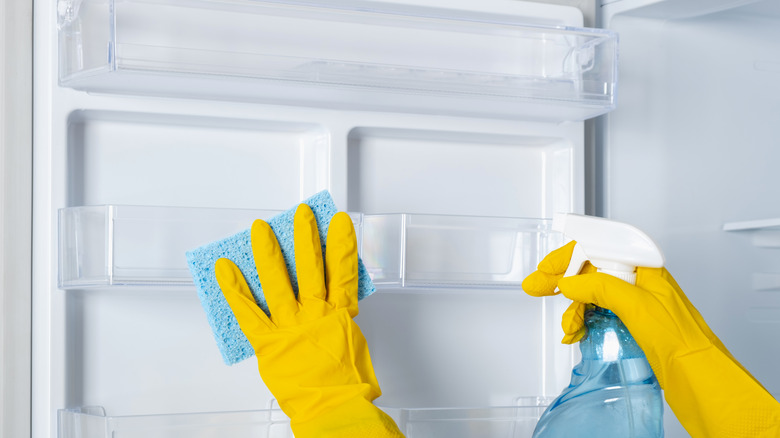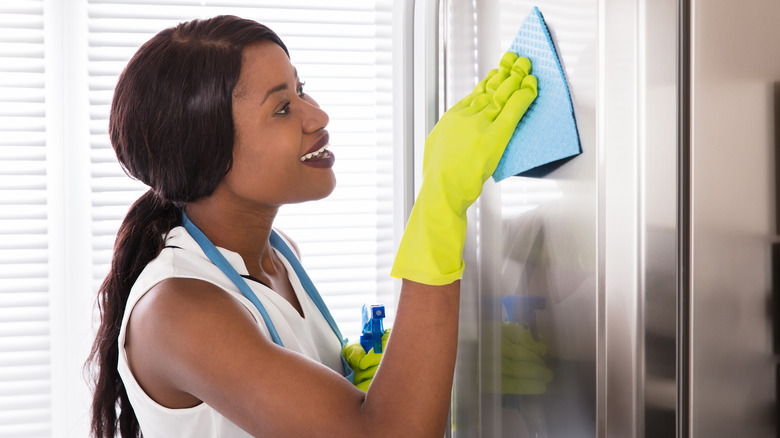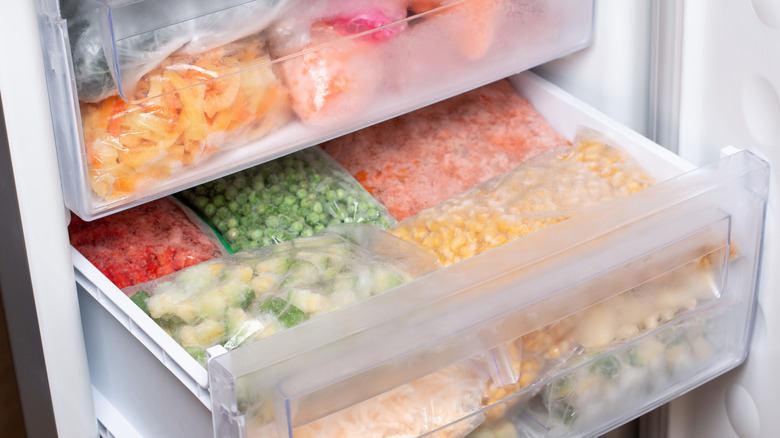Here's Why You Shouldn't Clean Your Fridge With Bleach
We all want a sparkling-clean refrigerator. After all, it holds the very things that enter our body, fuel daily activities, and sustain good health over time. You will often find yourself perfecting the art of storing your food in specific parts of your fridge to ensure they are as fresh as possible. GQ even calls it "the single most important appliance in your home." That's why the products we use for deep-cleaning days matter.
Many of the products we often use for cleaning our fridges contain bleach. Some might even use straight bleach to ensure their fridges are as clean as possible. Though you might think that bleach is the go-to gold for disinfecting and brightening tired surfaces, it's actually not a good idea to use it on or inside your fridge. For germ extinction, bleach can wreak havoc on surface materials or release harmful toxins into your food, depending on which area you're targeting.
How exactly can this happen? We'll show you.
Bleaching exterior fridge surfaces
Appropriate cleaning solutions for your fridge exterior depend on the material. The protective chromium oxide in stainless steel can be compromised with harsh cleaning solutions, including bleach (via Apartment Therapy). Epicurious instead recommends using a freshly laundered microfiber cloth and vinegar diluted with hot water for exterior refrigerator doors. Even the manufacturers of Clorox bleach recommend it primarily for door handles, edges, and "small spills" in your refrigerator rather than for deep cleaning on large areas.
Many cleaning substances come in different packaging, so it can be difficult to decide which one is the best. Thankfully, there is one type of bottle you should look out for. Whether your fridge surface is made of stainless steel or other materials, a spray-bottle solution avoids drippy messes and helps in saturating rubber seals, hinges, and hardware. It is also crucial to double-swipe refrigerator handles, which typically get touched dozens of times a day.
Bleach inside your fridge can be hazardous
Those delicious fresh flavors waiting inside your refrigerator enjoy the company they're keeping. In other words, while they linger inside "the box," they tend to absorb what's around them, including harsh cleaning products. This can be annoying at best and dangerous at worst.
Bleach is no exception. It can compromise food safety and even damage interior surfaces. Better Home & Gardens states that odors may transfer to food and that it's best to substitute commercial cleaners with effective options such as baking soda and mild dish soaps.
If you enter the polar regions of your kitchen (aka the refrigerator) with bleach in hand, at least follow the Food Network suggestion to use a minimal amount: 1 teaspoon per gallon of water, preferably only on removable shelves and doors. Thoroughly rinse off any bleach solution and clean with dish soap before returning inside components to the refrigerator.


